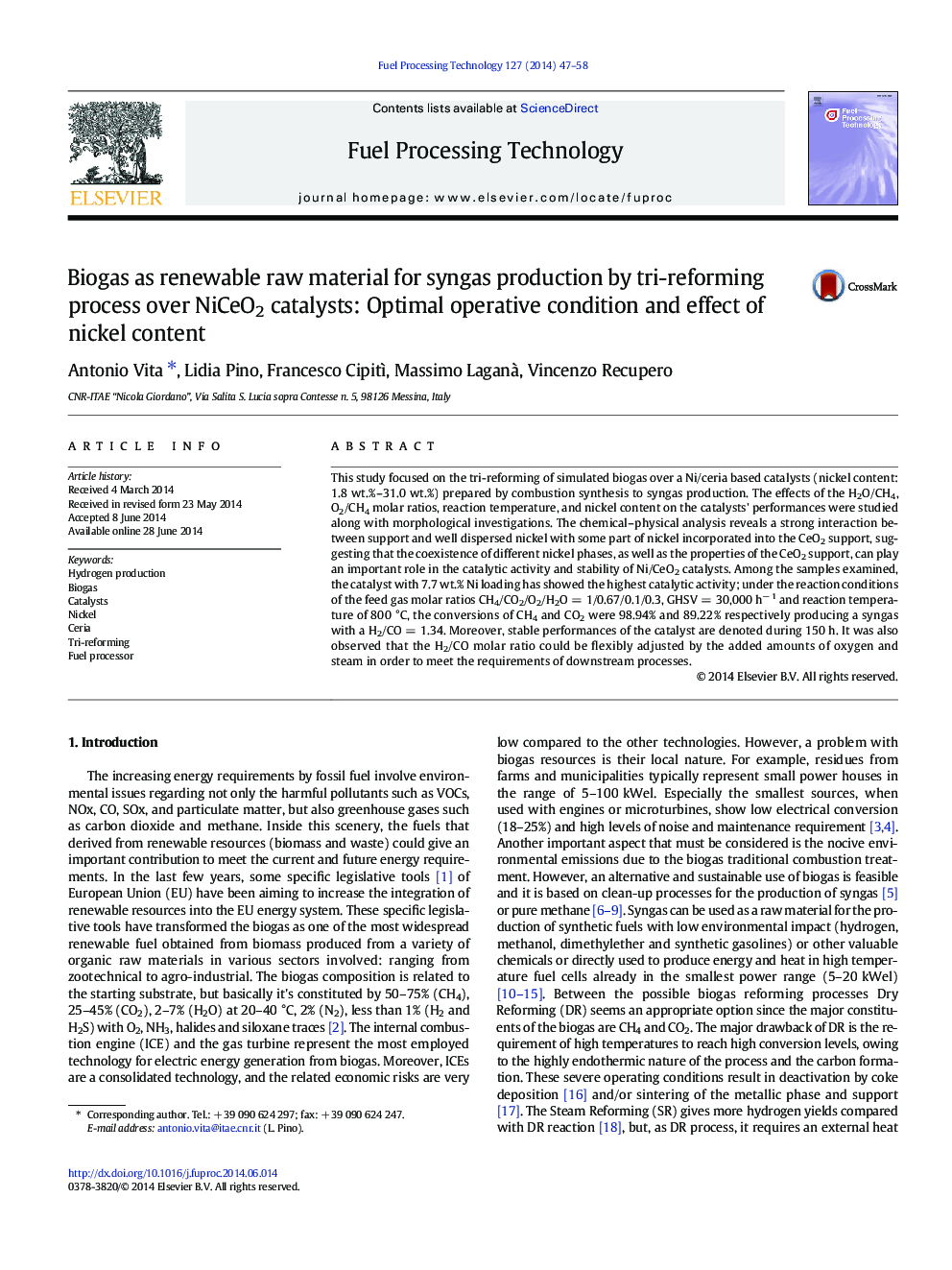| Article ID | Journal | Published Year | Pages | File Type |
|---|---|---|---|---|
| 209783 | Fuel Processing Technology | 2014 | 12 Pages |
•Preparation of active catalysts using low cost and less time- consuming method.•Optimization of Ni amount for high performance in the biogas tri-reforming process.•Highly conversion of the principal biogas component (CH4 and CO2) in to syngas.•Identification of the operating parameters able to assure higher performance.•Catalysts with high catalytic stability and high carbon resistance.
This study focused on the tri-reforming of simulated biogas over a Ni/ceria based catalysts (nickel content: 1.8 wt.%–31.0 wt.%) prepared by combustion synthesis to syngas production. The effects of the H2O/CH4, O2/CH4 molar ratios, reaction temperature, and nickel content on the catalysts' performances were studied along with morphological investigations. The chemical–physical analysis reveals a strong interaction between support and well dispersed nickel with some part of nickel incorporated into the CeO2 support, suggesting that the coexistence of different nickel phases, as well as the properties of the CeO2 support, can play an important role in the catalytic activity and stability of Ni/CeO2 catalysts. Among the samples examined, the catalyst with 7.7 wt.% Ni loading has showed the highest catalytic activity; under the reaction conditions of the feed gas molar ratios CH4/CO2/O2/H2O = 1/0.67/0.1/0.3, GHSV = 30,000 h− 1 and reaction temperature of 800 °C, the conversions of CH4 and CO2 were 98.94% and 89.22% respectively producing a syngas with a H2/CO = 1.34. Moreover, stable performances of the catalyst are denoted during 150 h. It was also observed that the H2/CO molar ratio could be flexibly adjusted by the added amounts of oxygen and steam in order to meet the requirements of downstream processes.
